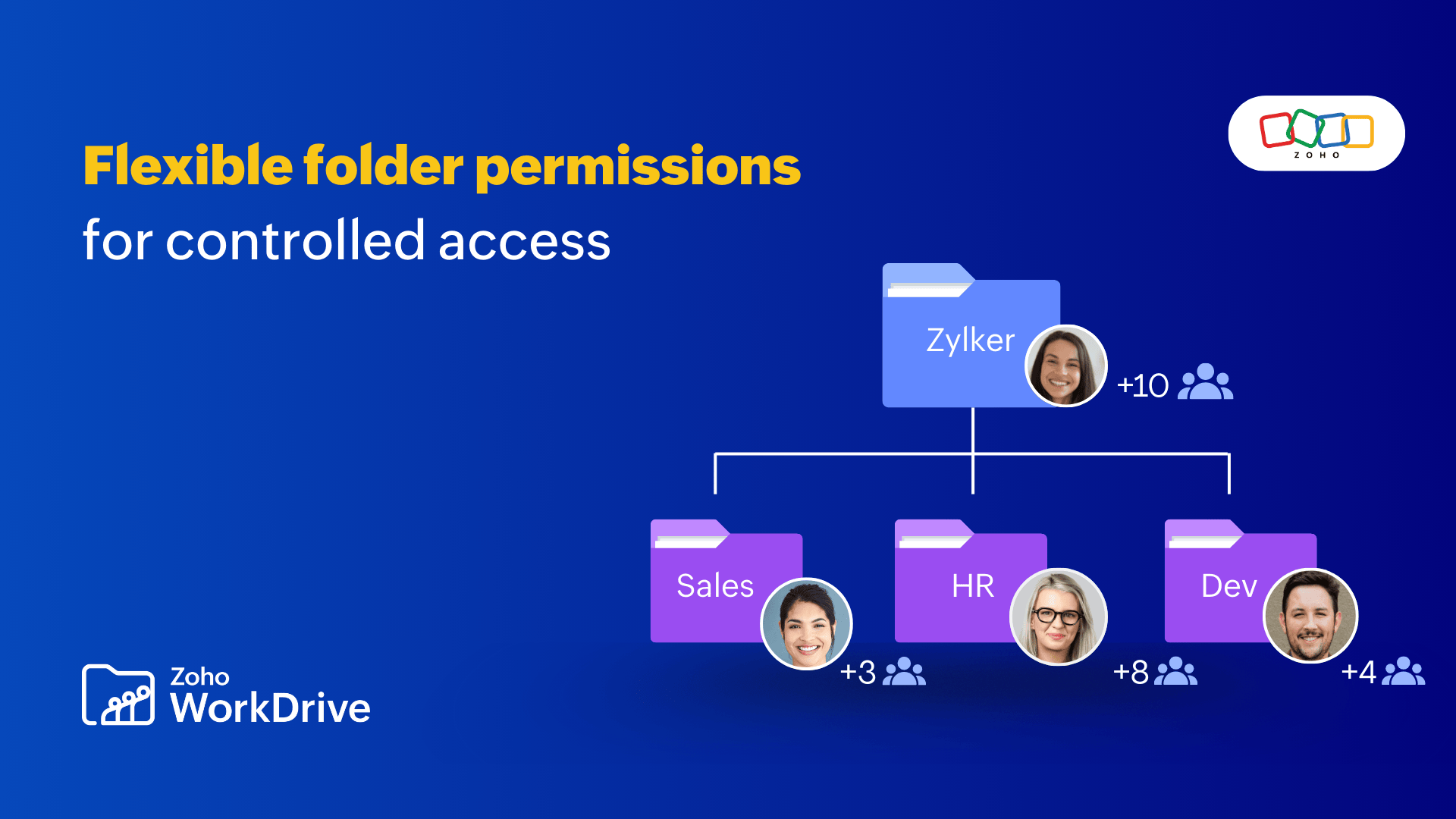Introducing Watermarks in WorkDrive: Importance, tips, and examples
- Last Updated : July 18, 2025
- 230 Views
- 4 Min Read
Each piece of content in your business repository represents a task, a decision, or a milestone. From strategy decks to design mockups, these are more than just idle files stored in your drive. They are the building blocks of your business. And whether they're shared internally or externally, keeping them protected is essential.
In a digital world where files can be downloaded, copied, altered, and re-shared within seconds, the risk of intellectual property theft is a business threat which can compromise your plans or cost you your competitive edge.
One simple yet powerful way to protect your content is by adding watermarks. A watermark clearly indicates ownership and helps prevent unauthorized use, duplication, or theft. In this blog, we’ll explore what a watermark is, how WorkDrive helps you utilize them effectively, and some best practices to follow when using them.
What is a watermark?
A watermark is a recognizable symbol, design, text, or a logo placed over a digital or physical document to identify ownership. The process of adding a watermark over an image, PDF, or video is called watermarking.
There are two types of watermarking: visible and invisible.
Visible watermarks are the most commonly used. Text or logos are placed on the content, either fully visible or as a transparent overlay. They help prevent unauthorized use of the resource and establish ownership and branding.
A photographer adding their brand logo to professional photos is a common example.
Invisible watermarks are embedded within the content and are not visible to the naked eye, but can be detected using special tools or software. These are added to track the ownership of content and can serve as legal proof.
For instance, streaming services embed a unique code in each user's video stream to trace pirated copies.
What are the benefits of watermarking?
Prevents unauthorized distribution:
Adding watermarks to business assets discourages unauthorized sharing. Visible watermarks clearly indicate ownership and make the content less attractive for plagiarism.
Establishes brand recognition:
A brand logo or text on marketing or promotional content enhances brand identity and doubles as a watermark.
Protects intellectual property:
A watermark is a practical way to assert copyright and reduce the risk of your work being reused without credit or permission of the owner.
Tracking and accountability:
Unique identifiers embedded in digital content help track distribution and enable accountability and support audit processes.
Introducing Watermarks in WorkDrive
WorkDrive brings watermarking directly into your business repository—no extra tools, no complicated steps. Whether you’re working with internal teams or external stakeholders, you can protect your content by adding watermarks in just a few clicks.
You can now protect your image files from unauthorized use, duplication, or theft by adding watermarks, such as text, logos, or images.
Text watermark:
Want a quick way to mark your image? WorkDrive makes it easy to add text watermarks that clearly show ownership. Just enter the text you need—like a brand name, company name, product title, document status, or a note. You can adjust the font style, size, opacity, and even repeat the text across the image in a grid-like pattern for better visibility.
To give you some practical use cases:
1. A project manager can add “Internal Use Only” as a text watermark when sharing early-stage visuals with cross-functional teams.
2. When sending internal memos or other material subject to NDAs, firms can apply a “Confidential” watermark to signal the sensitive nature of the content and limit distribution.
3. Real estate agents can watermark property photos with their agency’s name and contact details to prevent unauthorized reuse by competitors.
Image watermark:
Looking to watermark your content using a custom logo or seal? With WorkDrive’s image watermarking, you can place your brand logos, badges, or seals directly onto your image files. This helps reinforce branding, indicate ownership, protect your assets, and also makes it instantly recognizable.
Here’s how different teams can put it to use:
1. A design agency overlays their logo on client proposals to prevent re-use before the deal is confirmed.
2. A training academy adds their organization's logo on training slides and course materials to reinforce brand identity and prevent misuse by competitors.
3. An entrepreneur watermarks product photos with their logo before posting them on social media to discourage others from reusing their visuals.
Best practices for effective watermarking
Get the most out of watermarking in WorkDrive by following these best practices:
Keep your watermark visible but subtle:
Your watermark should be prominent enough to be noticeable but not take the focus away from the content.
Maintain brand consistency:
Stick to your brand’s fonts, colors, and text style so your watermark aligns with your branding.
Tailor it to fit the context:
Choose a text or image watermark that best matches the content’s purpose and is appropriate for the target audience.
Choose placement strategically:
Place the watermark where it’s difficult to remove, such as at the center or in a repeated pattern, without obscuring key visuals.
Secure with multiple layers:
Use watermarking alongside access controls, role-based permissions, and passwords to safeguard your content.
Final thoughts about watermarking
If content is the king, watermark is the shield that protects its value and authenticity. In a content-driven world where digital theft is increasingly common, watermarking adds an extra layer of security and control to your business assets.
Ready to protect your business content with watermarks?
Try it in Zoho WorkDrive today.


